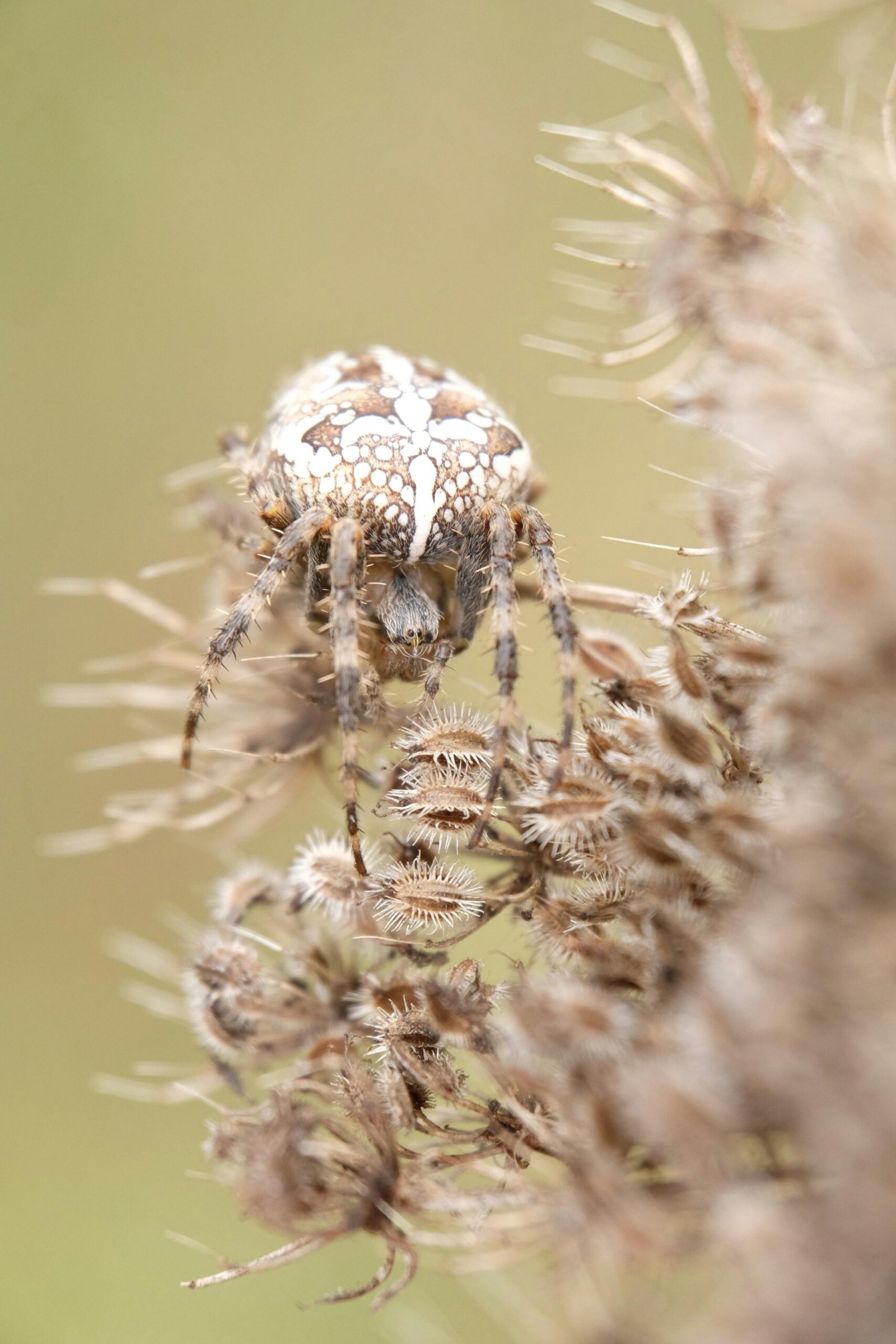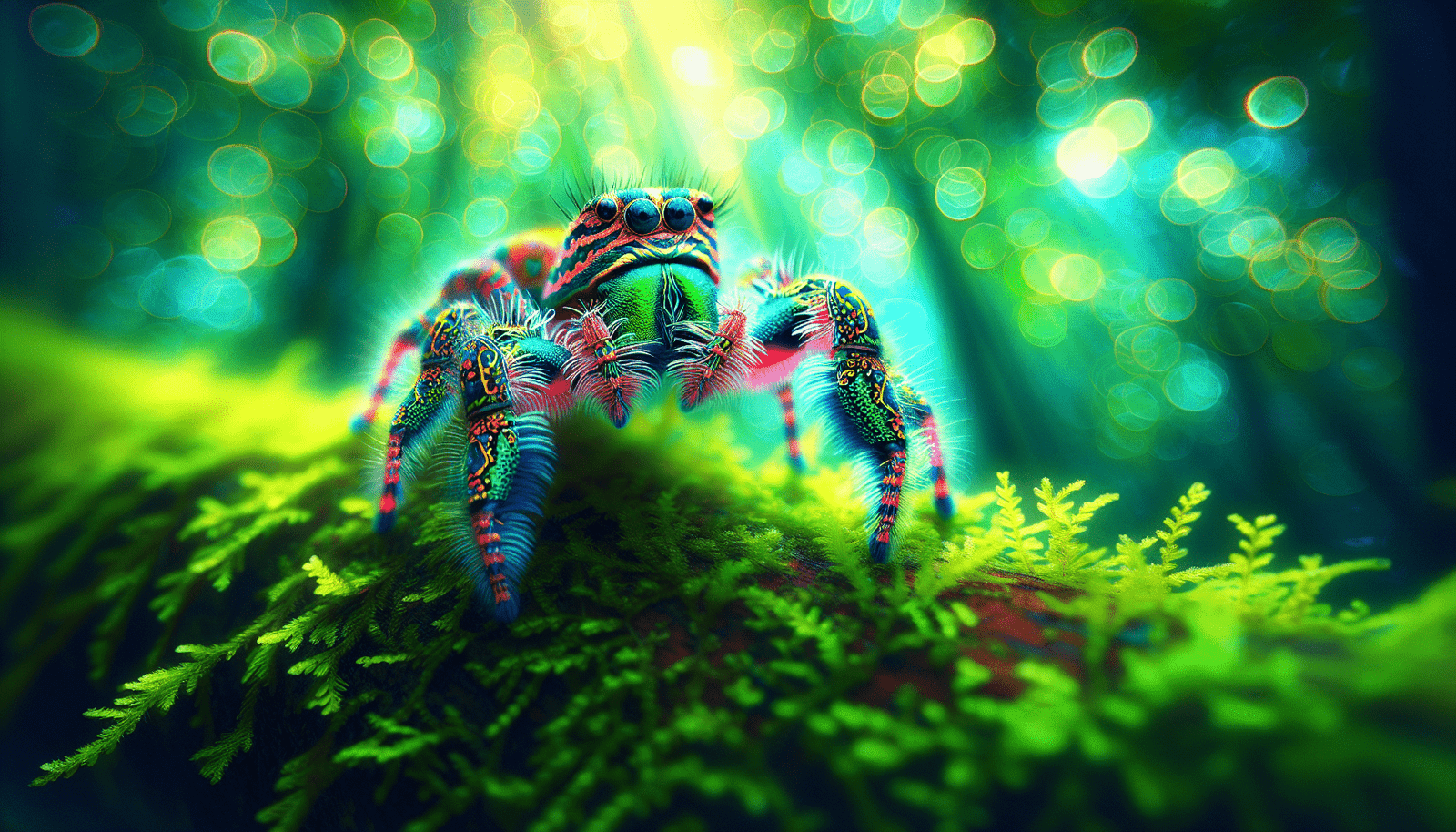Have you ever found yourself fascinated by the acrobatic prowess and captivating allure of jumping spiders? These tiny arachnids possess the unique ability to charm even the most arachnophobic individuals with their vibrant colors and intriguing behavior. If you’re an exotic pet enthusiast searching for a unique and manageable pet, tree-dwelling jumping spider species could be the perfect companions for you.
Jumping spiders, belonging to the Salticidae family, are renowned for their exceptional vision, distinctive hunting techniques, and engaging personalities. These spiders are not just visually appealing but are also relatively easy to care for, making them a popular choice among exotic pet enthusiasts. In the following sections, we’ll explore some tree-dwelling jumping spider species that could make an excellent addition to your arachnid family.
Why Choose Tree-dwelling Jumping Spiders?
Tree-dwelling jumping spiders are fascinating creatures. Unlike their ground-dwelling relatives, these spiders have adapted to life among the branches and foliage, which provides them with a distinctive set of behaviors and characteristics. Their arboreal nature makes them agile climbers, adept at navigating their complex habitats. Additionally, these spiders often exhibit vibrant colors and intriguing patterns, making them visually stunning choices for pet owners.
Caring for tree-dwelling jumping spiders involves providing them with a habitat that replicates their natural surroundings. This not only ensures their well-being but also allows you to observe their natural behaviors. Jumping spiders are known for their remarkable vision, which they use to stalk and ambush prey. Their playful and curious nature makes them engaging pets, as they often interact with their environment and, occasionally, with their keepers.

Essential Care Tips for Jumping Spiders
Before we leap into the specifics of suitable species, understanding how to care for tree-dwelling jumping spiders is crucial. Proper care ensures your spider thrives in captivity, exhibiting its natural behaviors and maintaining its health.
Habitat Requirements
Replicating a jumping spider’s natural habitat is essential. For a tree-dwelling species, consider setting up a vertically-oriented enclosure. A glass or clear plastic terrarium with ample ventilation works well. Fill it with branches, leaves, and silk plants to create a mini-ecosystem where the spider can display its climbing prowess. Providing hiding spots using bark or small plants can make the spider feel secure.
| Element | Recommendations |
|---|---|
| Enclosure Size | Small to medium-sized (enough for climbing) |
| Substrate | Coconut fiber or peat moss |
| Temperature | 75-82°F (24-28°C) |
| Humidity | 60-70% |
| Lighting | Natural light cycle or low-wattage LED lighting |
Feeding and Nutrition
Jumping spiders are carnivorous, feeding on a diet primarily consisting of small insects. In captivity, you can nurture them with fruit flies, small crickets, or other appropriately sized insects. It’s crucial to feed them prey of suitable size, typically no larger than the size of their abdomen, to avoid any risk of harm.
Fresh water must be provided, typically by misting the enclosure to maintain humidity and offer drinking water. Although they obtain most of their moisture from their prey, they do drink water droplets occasionally.
Handling and Interaction
While jumping spiders are friendly and curious, handle them gently and minimally. Using a soft brush or allowing the spider to climb onto your hand is the best approach. Note that each spider has a unique temperament, and always prioritize their comfort and safety during interaction.

Recommended Tree-dwelling Jumping Spider Species
Now that you’re familiar with basic care, let’s explore some captivating tree-dwelling jumping spider species suitable for exotic pet enthusiasts. Each species has unique attributes and charm, so let’s jump into the specifics.
1. Phidippus regius (Regal Jumping Spider)
The Regal Jumping Spider, recognized by its vibrant and contrasting patterns, is a delightful choice for any enthusiast. Native to the southeastern United States, this species typically exhibits a black body with white markings, although variations exist.
Characteristics and Behavior
- Size: Relatively large for jumping spiders, with a range of colors.
- Temperament: Curious and often bold, making them interactive pets.
- Lifespan: Approximately one to two years in captivity.
These spiders are known for their regal appearance and interactive nature. They usually require an enclosure with enough vertical space to accommodate their active lifestyle.
2. Hyllus diardi (Heavy Jumper)
Known for their large size and striking appearance, Hyllus diardi originates from Southeast Asia. They are popular for their expressive eyes and sizable stature among jumping spiders.
Characteristics and Behavior
- Size: One of the larger species within the jumping spider family.
- Temperament: Generally docile, making them easier to handle.
- Lifespan: Around two years when well cared for.
The Heavy Jumper requires a spacious enclosure to explore. Their gentle nature makes them a good choice for beginners.
3. Evarcha arcuata
Found predominantly in Europe, the Evarcha arcuata is celebrated for its striking black and red coloring. Its compact size makes it suitable for smaller enclosures, without sacrificing any of the charm offered by larger species.
Characteristics and Behavior
- Size: Smaller than many tree-dwelling species but still engaging.
- Temperament: Curious but more reserved than other species.
- Lifespan: Approximately one to one and a half years.
For those seeking a smaller spider that still brings plenty of allure, the Evarcha arcuata makes for an interesting choice due to its dynamic coloration and manageable size.
4. Marpissa muscosa (Fenced Jumping Spider)
The Marpissa muscosa, or Fenced Jumping Spider, is native to parts of Europe and known for its distinct color and patterning, resembling fence posts under the right conditions.
Characteristics and Behavior
- Size: Medium-sized with distinctive elongated body patterns.
- Temperament: Active, often seen exploring their environment.
- Lifespan: Around one year, potentially more with optimal care.
Their unique body shape and active nature make this species appealing for those interested in observing lively spiders.
5. Portia fimbriata (Fringed Jumping Spider)
A master of disguise and deception, the Portia fimbriata stands out due to its intricate hunting techniques and adaptability across multiple environments.
Characteristics and Behavior
- Size: Medium but often seems larger due to its fringes and cryptic coloring.
- Temperament: Observant and highly intelligent, with complex hunting strategies.
- Lifespan: Can live up to two years, benefiting from a varied diet.
Portia fimbriata are renowned for their tactical hunting, making them fascinating subjects for observation and study, appealing strongly to those interested in spider behavior.

Creating the Perfect Home for Your Jumping Spider
Now that you have insights into some enticing species, consider how to design an optimal home for these remarkable arachnids. While understanding their habitat requirements provides a base, customization ensures your spider leads an enriched life.
Terrarium Setup
When setting up a terrarium, consider the natural environment of your spider. Create layers using substrate like coconut fiber, ensuring it retains humidity without becoming waterlogged. Introduce branches for climbing, coupled with a mix of live or artificial plants to provide cover and mimic their native environment.
Environmental Enrichment
Enrichment is key to keeping your spider stimulated. Rotating decorative elements like branches or logs changes their environment slightly, offering new exploration opportunities. Consider introducing different insects for hunting, providing mental and physical activity through predation.
Health Monitoring
Regularly observe your spider for changes in behavior, appetite, or appearance, which could indicate stress or illness. Keeping their enclosure clean and free from mold is critical. Periodically mist their habitat to maintain the desired humidity levels, promoting well-being.

Common Challenges and Solutions
Owning a jumping spider, like any pet, comes with its challenges. Here are some typical issues you may face and solutions to help you overcome them.
Low Humidity Levels
Jumping spiders require specific humidity levels. If you notice your spider’s abdomen shrinking or behaving lethargically, increase misting frequency or introduce a small water dish to correct humidity.
Improper Feeding
Ensure prey size matches your spider’s capabilities. Over or underfeeding affects their health, so monitor prey intake and adjust portions accordingly.
Molting Complications
Molting is essential in a spider’s growth but can be stressful. Provide a secluded area for molting and refrain from handling during this time to avoid injury or stress.

Final Thoughts
Tree-dwelling jumping spiders offer unique opportunities for exotic pet enthusiasts. With proper care, they become not only visually captivating pets but also engaging companions. Their ease of maintenance, coupled with the possibility of observing complex behaviors, makes them ideal for those seeking an exotic yet manageable pet.
Venturing into the world of jumping spider care fosters a deeper appreciation for these incredible creatures. Whether you’re captivated by their vibrant appearances or their intriguing behaviors, these tree-dwelling spiders can surprise and delight at every turn. Remember, by creating a conducive environment and understanding your spider’s needs, you’ll ensure a fulfilling and enriching experience for both you and your arachnid companion.